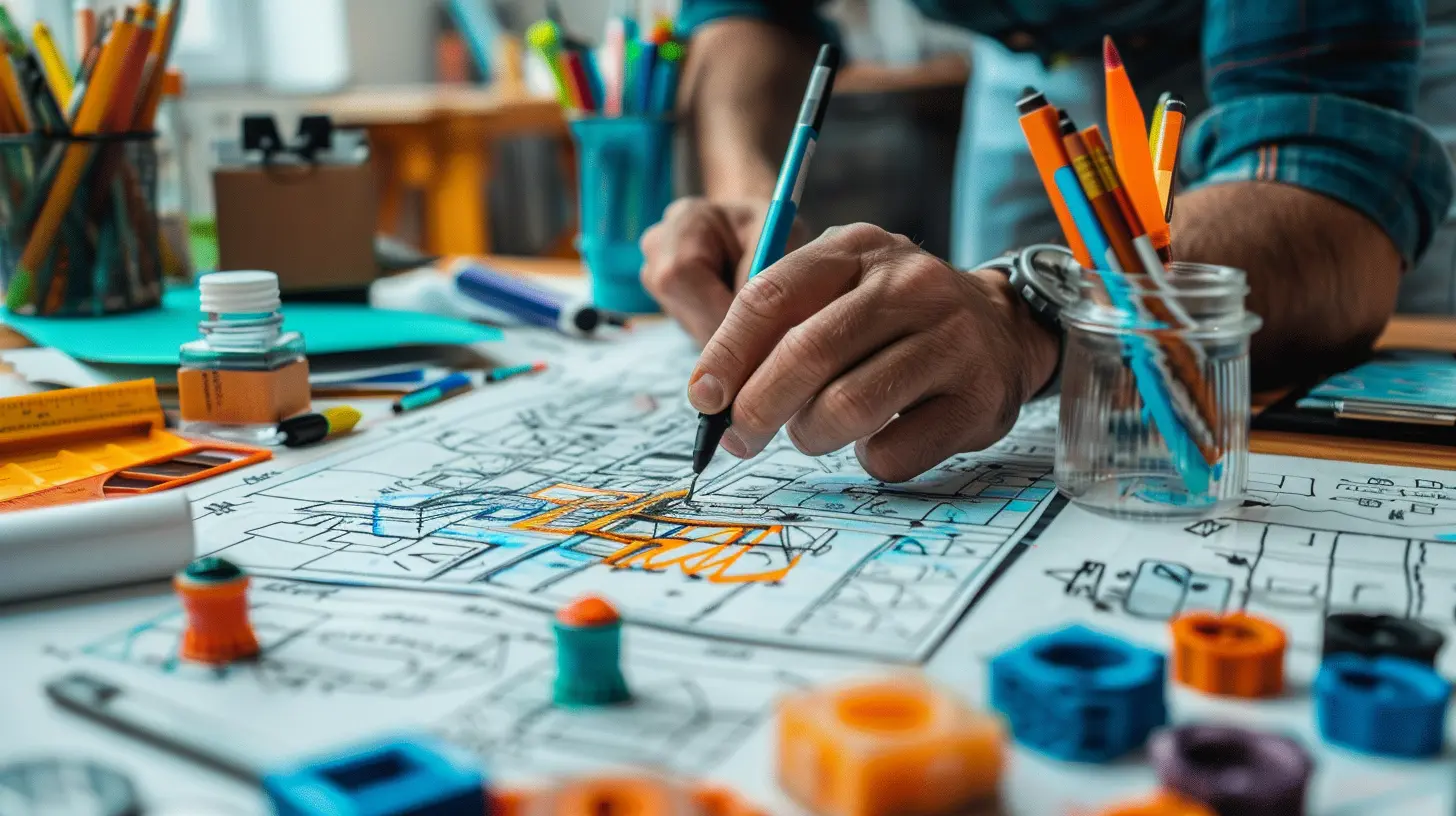Crowdfunding for Product Development: Prototyping to Production
8 June 2025
Turning an idea into a real product can feel like climbing a mountain without a map. You have an amazing concept, but how do you bring it to life without draining your bank account? That’s where crowdfunding comes in.
Instead of seeking investments from big corporations or taking out hefty loans, crowdfunding lets you connect directly with potential customers. They fund your project, and in return, you get the cash to develop, prototype, and manufacture your product.
But let's be real—crowdfunding isn’t just about posting a campaign and hoping for the best. It’s a journey, from sketching out rough ideas to finally shipping a polished product to backers. Let’s break down how you can navigate this process successfully. 
Understanding Crowdfunding for Product Development
Before we dive deep, let’s clarify what crowdfunding is all about.Crowdfunding is a way of raising money by getting small contributions from a large number of people, usually via online platforms like Kickstarter, Indiegogo, or GoFundMe. Instead of traditional funding, where a handful of investors hold stakes in your company, crowdfunding allows everyday people to support your project in exchange for perks, early access, or discounts.
For product creators, it’s an incredible way to:
✅ Validate your idea
✅ Raise funds without giving up equity
✅ Build a community of early adopters
✅ Gain valuable pre-market feedback
Now, let’s walk through the entire journey, step by step. 
Step 1: Idea Validation – Is Your Product Worth Crowdfunding?
Great ideas are everywhere, but not every idea turns into a successful product. Before you jump into crowdfunding, you need to validate your concept.How do you do that?
- Market Research: Is there a demand for your product? Check forums, social media, and even competitors. If people already spend money on similar products, that’s a good sign.- Ask Potential Customers: Talk to your target audience. Would they pay for your product? What features do they care about most?
- Check Competitor Crowdfunding Campaigns: See how similar products performed on crowdfunding platforms. Take notes on what worked and what didn’t.
This step helps you avoid wasting time and money on something people don’t actually want. 
Step 2: Prototyping – Bringing Your Idea to Life
Once you’ve validated your idea, it's time to build a prototype. This is where your concept transforms from a sketch on paper into a tangible product.Why does prototyping matter?
A prototype proves that your idea is more than just a dream—it’s something that can actually work. It also helps you estimate manufacturing costs and iron out design flaws before mass production.How to create a prototype?
There are different ways to go about it, depending on the complexity of your product:- 3D Printing: If you're working on a physical product, 3D printing is a quick and cost-effective way to create a prototype.
- Handmade Prototypes: For simple products, a DIY approach might do the trick.
- Hiring a Prototyping Company: If your product requires electronics or complex mechanics, working with professionals may be your best bet.
The goal isn’t perfection—it’s proof of concept. A working prototype is a game-changer when it comes to convincing potential backers. 
Step 3: Preparing a Killer Crowdfunding Campaign
Now comes the exciting part—building your crowdfunding campaign! But don’t rush into it. Successful campaigns are carefully planned and executed.What makes a crowdfunding campaign successful?
1. A Compelling StoryPeople don’t just back products—they back stories. Share your journey, your struggles, and why your product needs to exist. Make it personal.
2. High-Quality Visuals
Photos, GIFs, and professional-looking videos are a must. Your campaign should look polished and trustworthy.
3. Clear Rewards & Pricing
Offer different reward tiers—early bird discounts, bundles, exclusive editions—to encourage people to pledge more.
4. A Well-Defined Funding Goal
Set a realistic goal based on your production costs. If your goal is too high, you might scare off backers. If it’s too low, you might not raise enough to manufacture your product.
5. Pre-Launch Hype
Many creators make the huge mistake of launching without an audience. Promote your campaign weeks (or even months) in advance through email lists, social media, and influencers.
Step 4: Running a Successful Crowdfunding Campaign
Your campaign is live! Now what? Just hitting "launch" won’t magically bring in backers. You need to stay involved and keep people excited.How to maximize your campaign's success?
- Engage with Backers: Answer questions, reply to comments, and provide updates regularly.- Leverage PR & Influencers: Reach out to bloggers, YouTubers, and journalists in your niche.
- Create a Sense of Urgency: Limited-time early bird discounts work wonders.
- Run Ads: Facebook and Instagram ads can help bring more traffic to your campaign.
Remember, most successful campaigns get a big boost in the first 48 hours. That’s why pre-launch marketing is so important.
Step 5: Manufacturing – Turning Funds into Products
Congrats—you hit your crowdfunding goal! But the work isn't over yet. Now you need to manufacture your product and fulfill orders.How do you go from prototype to mass production?
1. Find a ManufacturerLook for reliable factories that can produce your product at scale. Websites like Alibaba and ThomasNet are great starting points.
2. Finalize Materials & Design
Get everything locked in before manufacturing starts. Changes at this stage can be costly.
3. Test Samples Before Full Production
Always order prototypes from the manufacturer before mass production. This helps you catch any defects early.
4. Plan for Shipping & Fulfillment
Are you shipping worldwide? Will you handle logistics yourself or use a fulfillment center? These decisions matter.
Manufacturing can take months, so keep your backers updated. Communication is everything!
Step 6: Delivering to Backers and Beyond
Once you’ve produced your product, it’s time to ship it to your backers. This moment is make-or-break—delays and poor quality can ruin your reputation.How to ensure a smooth delivery process?
- Set Realistic Delivery Dates: Unexpected delays happen, so don’t promise impossible deadlines.- Use Reliable Shipping Partners: Cheap shipping can lead to lost or damaged products.
- Keep Backers in the Loop: If delays happen, communicate openly and honestly.
Once all backers have received their rewards, you can start focusing on the next phase—scaling your business!
Final Thoughts
Crowdfunding offers an incredible opportunity to bring your product idea to life without traditional funding. But it’s not a walk in the park—it requires research, planning, and persistence.From validating your idea and prototyping to launching a campaign and manufacturing, each step plays a crucial role in your success. By following this blueprint, you’ll be well on your way to turning your product dream into reality—one backer at a time.
Ready to get started on your crowdfunding journey? Your future customers might just be waiting to support you!
all images in this post were generated using AI tools
Category:
CrowdfundingAuthor:

Ian Stone
Discussion
rate this article
2 comments
Peter Powell
Great insights on crowdfunding! It’s amazing how it can turn ideas into reality. Excited to see how innovative products emerge from this collaborative approach. Thanks for sharing these tips!
June 12, 2025 at 2:56 AM

Ian Stone
Thank you! I'm glad you found the insights helpful. Exciting times ahead for innovators!
Lincoln Underwood
Crowdfunding is a powerful tool for turning innovative ideas into tangible products; it bridges funding and creativity effectively.
June 10, 2025 at 3:08 AM

Ian Stone
Thank you! I completely agree—crowdfunding truly empowers creators by transforming concepts into reality while fostering community support.


